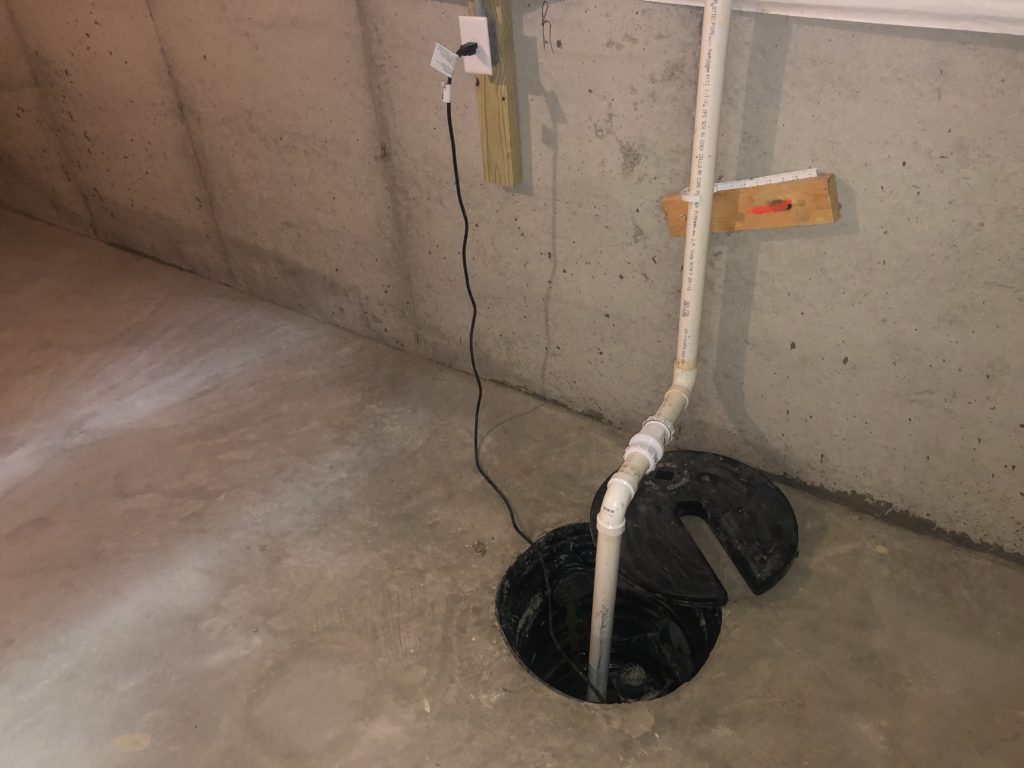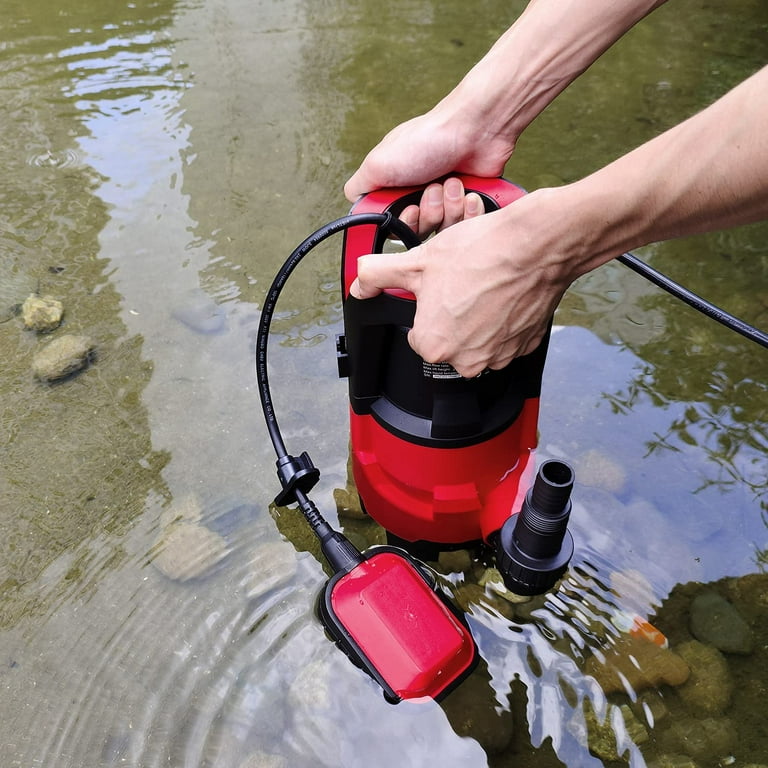Straightforward Instructions for Taking Care of a Sump Pump
Straightforward Instructions for Taking Care of a Sump Pump
Blog Article
We've unearthed this great article pertaining to How To Effectively Clean A Sump Pump down the page on the web and figured it made perfect sense to discuss it with you on this page.

Sump pumps are crucial components in numerous homes, especially in locations prone to flooding or too much wetness. They assist avoid water damage by effectively removing excess water from basements or crawl spaces. However, like any other device, sump pumps need normal maintenance to guarantee they function efficiently when required one of the most. Cleaning your sump pump is an important part of its maintenance, and comprehending how to do it correctly can conserve you from pricey repairs and prospective disasters.
Intro
Preserving a clean sump pump is vital for its proper performance and long life. Disregarding this crucial task can bring about obstructions, breakdowns, and ultimately, water damage to your property. For that reason, finding out just how to clean up a sump pump is important for house owners who rely upon these gadgets to maintain their cellars dry and protected.
Indications of a Dirty Sump Pump
Understanding when your sump pump requires cleansing is critical for avoiding prospective malfunctions. Some common indications that show a filthy sump pump include odd sounds throughout operation, lowered water circulation, and visible debris in the pit. If you observe any one of these signs and symptoms, it's vital to cleanse your sump pump without delay to stay clear of any kind of additional problems.
Preparing for Cleansing
Prior to you start cleansing your sump pump, it's necessary to take some safety and security preventative measures. Beginning by shutting down the power to the pump to prevent any electric accidents. Furthermore, wear ideal protective equipment, such as handwear covers and goggles, to secure on your own from dust, debris, and prospective microorganisms.
Understanding the Sump Pump
Before diving right into the cleaning process, it's essential to have a standard understanding of how a sump pump works. Commonly mounted in a pit or container listed below the basement flooring, a sump pump consists of several essential elements, including a pump, a float switch, and a discharge pipeline. When water collects in the pit, the float button turns on the pump, which then pumps the water out through the discharge pipeline, far from the building's foundation.
Detailed Guide to Cleaning Up a Sump Pump
Shutting Off the Power
Begin by disconnecting the power supply to the sump pump to avoid any type of accidents while cleansing.
Checking for Proper Performance
Before reinstalling the pump, carry out a fast examination to make certain that the float switch turns on the pump properly. Pour some water into the sump pit and observe the pump's operation. If whatever is working properly, you can reconstruct the pump and reconnect the power supply.
Getting Rid Of Particles and Dirt
Make use of a pail or a scoop to eliminate any type of noticeable debris, dust, or sediment from the sump pit. Dispose of the particles properly to stop it from clogging the pump or the discharge pipe.
Cleansing the Pump and Drift Switch
Once the pit is clear of particles, carefully get rid of the pump from the pit. Evaluate the pump and the float switch for any kind of signs of damage or wear. Use a soft brush or fabric to cleanse the surface areas and remove any kind of gathered grime.
Purging the System
After cleansing the pump and float switch, flush the sump pit with clean water to eliminate any continuing to be dirt or sediment. This will certainly aid make sure that the pump operates smoothly and successfully.
Upkeep Tips to Maintain Your Sump Pump Clean
Along with routine cleansing, there are a number of maintenance tips you can follow to maintain your sump pump in ideal condition:
Conclusion
Cleaning your sump pump is a critical element of its upkeep and ensures that it runs effectively when you require it one of the most. By adhering to the steps laid out in this guide and incorporating normal maintenance right into your regimen, you can extend the lifespan of your sump pump and shield your home from water damages.
6 STEPS ON HOW TO CLEAN A SUMP PUMP PROPERLY
UNDERSTANDING SUMP PUMPS
Your sump pump plays a crucial role in protecting your home by managing and removing excess water. It primarily functions as a “shield”, guarding your basement against the damaging effects of water accumulation. The pump is housed in a sump pit in the lowest part of your basement, and its job is to pump out any water that collects there.
During heavy rainfalls or when snow melts rapidly, water can infiltrate your basement, posing potential risks like flooding, structural damage, and harmful mold growth. Here, the sump pump springs into action, pumping out the intruding water and directing it away from your home.
SAFETY FIRST
Before cleaning, remember to prioritize safety. Disconnect the sump pump from the power source to prevent any accidental electric shocks. Also, wear sturdy gloves to protect your hands from any sharp or dirty components within the pump.
REMOVE THE SUMP PUMP
After ensuring your safety, the next step is to remove the sump pump from its pit. Doing this might require careful maneuvering as you don’t want to damage any pump components. Once removed, clean the sump pit to remove any accumulated debris or sludge.
INSPECT THE PUMP
Inspect the pump for any visible signs of wear or damage. Check the power cord, float switch, and impeller housing. If any components look worn out or damaged, consider replacing them to ensure optimal performance.
CLEAN THE PUMP
Thoroughly clean the pump with warm, soapy water. Make sure to rid it of any dirt, gravel, or other debris that might impede its performance. You can use a toothbrush to clean the small, hard-to-reach parts of the pump.
REINSTALL THE SUMP PUMP
Reinstall the pump into the sump pit Make sure it’s positioned correctly to remove the water effectively Once it’s back in place, reconnect it to the power source TEST THE PUMP
Finally, pour some water into the pit to ensure the pump works correctly. It should start automatically and begin pumping out the water; if it doesn’t, check the power source and the positioning of the pump.
Remember, while cleaning your sump pump is an essential part of home maintenance, hiring a professional plumber for a thorough inspection and cleaning at least once a year is also important. This will ensure that your pump is in optimal condition, ready to protect your home from potential water damage.
BEST PRACTICES FOR CLEANING SUMP PUMP DISCHARGE PIPES
Regular Inspection: Regularly inspect your discharge pipes, especially during heavy rainfall or snowmelt periods. Look for any signs of blockage or damage. Early detection of problems can prevent serious issues down the line. Periodic Cleaning: Over time, sediment and debris can accumulate in the discharge pipes, impeding the flow of water. Regular cleaning helps keep the pipes clear and functioning efficiently. You can use a high-pressure water jet to effectively clean the pipes. Insulation During Winter: In colder climates, discharge pipes can freeze, blocking the outflow of water. Protect your discharge pipes from freezing temperatures by insulating them with foam pipe insulation. This will ensure the sump pump can continue to discharge water even in freezing conditions. Proper Positioning: The discharge pipe should be positioned to direct water away from your home’s foundation. Improper positioning can lead to water seeping back into the basement. Ensure the pipe is long enough and angled correctly. Installation of a Check Valve: A check valve prevents water from flowing back into your sump pit after the pump has pushed it out. Installing a check valve helps maintain the efficiency of your sump pump and reduces the risk of flooding. Minimize Pipe Turns: Every curve or turn in the discharge pipe can decrease the efficiency of water flow. By minimizing turns and bends in your discharge pipe, you can increase the efficiency of your sump pump. https://www.fullspeedplumbing.com/how-to-clean-a-sump-pump-properly9999/

We had been shown that article on How to Care for Your Sump Pump through an associate on a different website. For those who enjoyed reading our post kindly don't forget to share it. Thanks for your time spent reading it.
Free Estimates Report this page